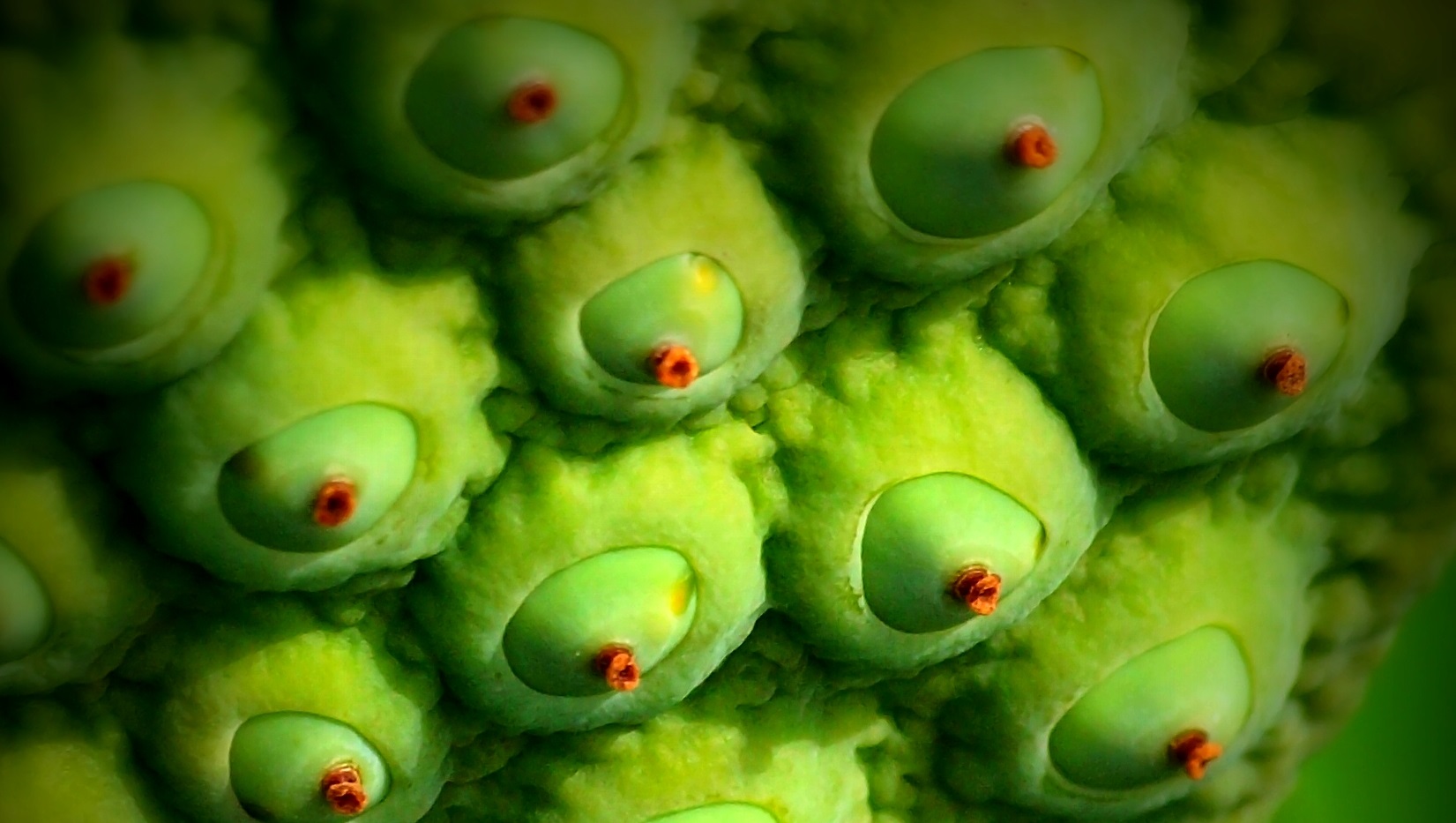Do you ever feel a rush of anxiety and disgust seeing a lotus pod or a honeycomb? As unusual as it may sound, this kind of phobia do exist and is known as trypophobia. Trypophobia is derived from Greek word “trypa” which means holes. The intense, irrelevant and strange fear and anxiety of holes, pods or other such punctured marks is known as trypophobia.
Basically the discomfort arises from tiny holes and pods arranged asymmetrically, instead of large holes. Trypophobic people have complained of having the uncontrollable anxious feeling upon seeing just the pictures of holes or objects punctured with small holes. Unlike other phobias, this kind of phobia is rather unusual and erratic as it’s not just the fearful feeling but the overwhelming disturbance faced by looking at holes. Some triggering objects for trypophobia are lotus pod, honeycomb, strawberry skin, pomegranate, wasp’s net, pores and marks on skin and even sponges.

How does it feel to Have Trypophobia?
Trypophobia can be very disturbing and creepy. Many people having trypophobia have complained about having a rush of disgust all over the body, and feeling like covering or throwing away the object with holes immediately. Many others report to have itchy feeling all over the body and feeling sick immediately. In severe cases, people tend to sense a feel of falling on those holes and experience panic attacks.
How common is Trypophobia?
Trypophobia came in the picture only in 2005. A lot of people have complained about an excessive feeling of distress due to holes, or even pictures of holes. Internet has splurged several images of holes and pods, and thousands of people reported to feel Trypophobic. At least 16 percent of people are estimated to have trypophobia. It can occur with anyone regardless of age, sex or any other personal attributes.
What Causes Trypophobia?
Different causes may be responsible for trypophobia such as:
Evolutionary Factors
The distress formed due to the holes has been seen as an evolutionary survival response. Humans have formed a natural defense and fear against poisonous animals such as the blue-ringed octopus, snakes, spiders and scorpions which have similar visual features resembling holes and craters. Eventually, the brain perceives all the holes and punctured marks as harmful and disturbing. This means this fearful instinct may be already established in the genes only.
Learnt behavior
It can be a learnt behavior from someone else. People reported that they were not feeling anxious of such clustered holes until they heard or saw someone else feeling that way. It may be an influence or learnt fear from people around that such holes are disturbing.
Associated incident
It can be a result of a previous incident when a person encountered clustered holes, and found oneself in dismay suddenly. If a person got a painful and sudden allergic reaction on skin with clustered pores appearing, it might also trigger trypophobia. It may result from other incidents such as bee stings and illnesses such as measles and chicken pox in childhood.
What are the symptoms?
The common symptoms include:
- Feeling of overwhelming distress, disgust and mental disturbance upon the sight of clustered holes and pores
- Having itchy feeling all over the body till a longer time period
- Feeling light-headed and sick after the sight
- Feeling like the skin is crawling or creeping after the sight of such pores
- Compulsive need to clean oneself or take shower after the sight of such holes
- In severe cases, people can have panic attacks including physical signs like trembling, racing heartbeat, sweating, abdominal uneasiness and difficulty in breathing
When to see a doctor?
If the above symptoms have been regularly appearing and crossed more than six months time, you might want to start some therapies. Moreover, if you regularly need to confront anything associated with holes and pores like gardening or skin diseases, you need to consult a doctor to bring the symptoms under control.
How is it treated?
Trypophobia can be treated using a number of therapies. The most effective ones include:
Exposure therapy
In this kind of phobia, facing the object or source causing the fear and anxiety is the only way to overcome it. The therapist makes the person confront anything associated with holes and pores, and studies the reaction. The major aim is to help the person tolerate the feelings developed upon the sight of holes by using relaxing ways such as breathing control and mental visualization exercises. Gradually, the levels of the anxious feelings are reduced after several exposure sessions.
Cognitive Behavioral Therapy (CBT)
CBT is an effective therapy that goes hand in hand with exposure therapy. The fear and anxiety may not be a direct byproduct of the object, but just the negative images surrounding the object. For instance, honeycombs and aerated chocolates might also cause trypophobia, but in actual they are sweet products. CBT is focused on understanding the negative images, and replacing them with positive ones. The therapist conduct regular counseling sessions, and helps the person change the way he/she thinks about holes and pores.